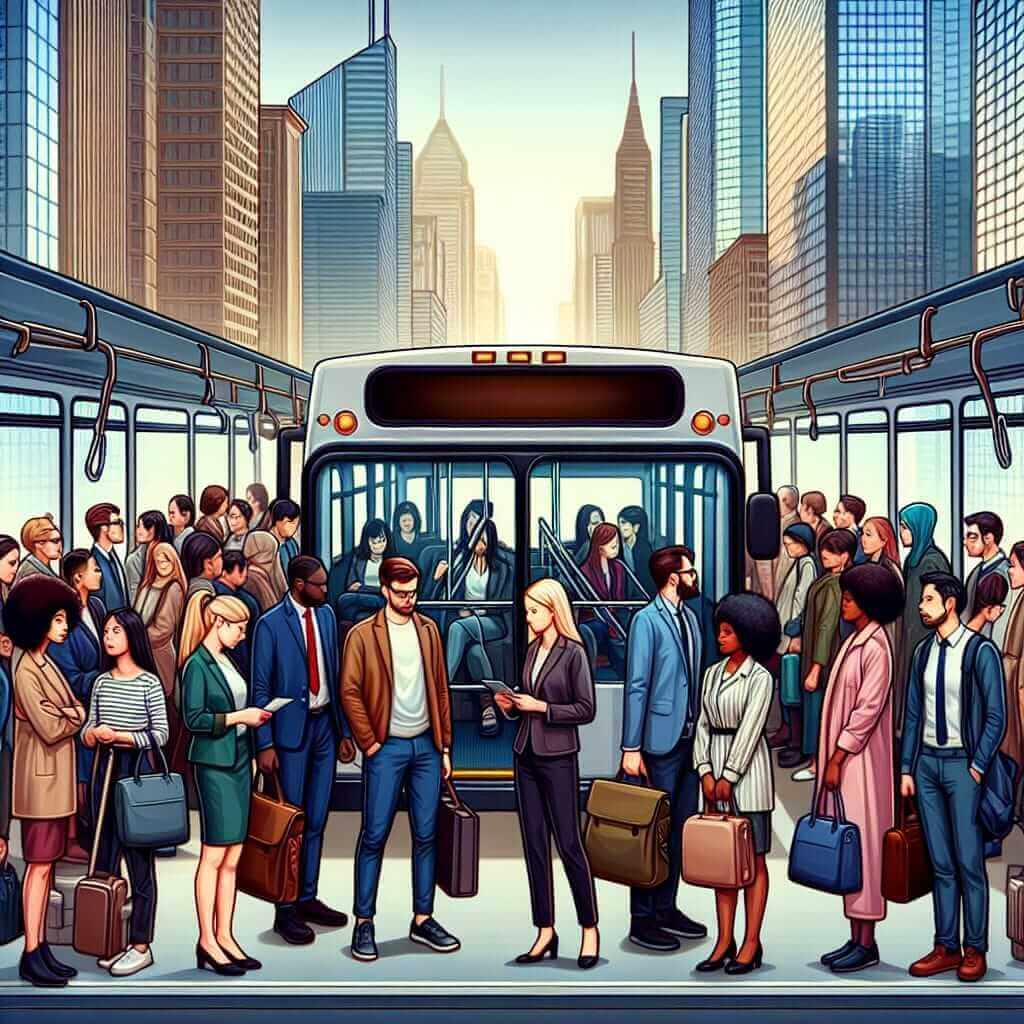The IELTS Reading section is a vital part of the IELTS exams that assess a wide range of reading skills, including reading for gist, reading for main ideas, reading for detail, skimming, understanding logical argument, and recognizing writers’ opinions, attitudes, and purposes. This part of the exam includes three reading passages with a total of 40 questions that need to be answered within 60 minutes.
Urbanization, a prevalent topic discussed in academic texts, has various effects on public transportation systems. This theme has emerged in past IELTS Reading tests and remains significant due to the ongoing global urbanization trends. Understanding the implications of urbanization on public transportation systems is crucial for those aiming to perform well in the Reading section of the IELTS, as it covers a wide range of vocabulary and complex grammatical structures.
To help you practice, we have created a detailed IELTS Reading passage sample on this topic, complete with questions and answers. This sample reflects the type of academic texts and questions you might encounter in the IELTS exam.
Main Content
Reading Passage
How Urbanization Affects Public Transportation Systems
Urbanization is one of the most significant demographic trends of the modern era, characterized by the shift of populations from rural to urban areas. This process leads to the expansion and densification of cities, resulting in profound changes to many aspects of urban life, including public transportation systems.
As cities grow, public transportation systems must adapt to accommodate increasing numbers of passengers. One primary impact of urbanization is the heightened demand for efficient and reliable public transportation. Cities experiencing rapid urban growth often face challenges such as overcrowding on buses and trains, which can lead to delays and decreased passenger comfort.

Moreover, urbanization typically results in the expansion of metropolitan areas, requiring the development of extensive transportation networks. This might include the construction of new rail lines, bus routes, and even entirely new modes of public transit, such as light rail or metro systems. Such developments necessitate significant investment in infrastructure, which can strain municipal budgets.
Another consequence of urbanization is the changing spatial patterns within cities. As new neighborhoods are developed, and existing ones become denser, public transportation routes must be re-evaluated and potentially redesigned to ensure they meet the evolving needs of the urban population. This can involve the introduction of transit-oriented development (TOD) strategies, where public transport accessibility is a key factor in planning urban environments.
Furthermore, urbanization can lead to increased traffic congestion, which poses significant challenges for surface-level public transportation such as buses and trams. To mitigate these issues, many cities are investing in dedicated bus lanes and priority traffic signals to improve the speed and reliability of these services.
Environmental concerns also play a crucial role in shaping public transportation in urbanized areas. The shift towards more sustainable transport solutions, such as electric buses and bikes, is often accelerated by the larger climate impacts of densely populated urban centers. Urban planners increasingly recognize public transportation’s role in reducing city carbon footprints, prompting investments in green transportation infrastructure.
Advances in technology are also crucial in addressing the challenges posed by urbanization. Innovations such as real-time tracking, mobile ticketing, and data-driven route optimization help public transportation systems become more efficient and user-friendly.
In conclusion, urbanization profoundly affects public transportation systems by increasing demand, changing spatial dynamics, and necessitating technological and infrastructural adaptations. Efficient, sustainable public transportation solutions are critical to managing the challenges of urban growth and ensuring the continued functionality of urban environments.
Questions
Identifying Information (True/False/Not Given)
- Urbanization only affects the development of new rail lines.
- Transit-oriented development strategies involve planning urban environments based on public transport accessibility.
- Dedicated bus lanes can improve the reliability of bus services in urban areas.
Summary Completion
Complete the summary using the list of words A-F below.
Urbanization requires public transportation systems to (4) to increased demand, often leading to challenges like overcrowding and (5) . Additionally, urbanization may necessitate the (6) of new neighborhoods, which requires the redesign of transportation routes. Furthermore, environmental concerns drive the adoption of (7) solutions to reduce urban carbon footprints.
A. delays
B. expansion
C. adapt
D. efficiency
E. sustainable
F. investments
Answer Key
- False. (Urbanization affects multiple aspects of public transportation, not just rail lines).
- True. (Transit-oriented development strategies do involve planning based on transport accessibility).
- True. (Dedicated bus lanes can indeed improve the reliability of bus services).
Summary Completion Answers:
4. C (adapt)
5. A (delays)
6. B (expansion)
7. E (sustainable)
Errors to Avoid
- Misinterpreting Questions: Ensure you understand what each question asks. Pay attention to key terms and instructions.
- Overlooking Key Details: Small details can change the meaning of statements and answers. Read every part carefully.
- Inaccurate Summaries: When completing summaries, make sure the chosen words fit the context both grammatically and semantically.
Vocabulary
- Densification (noun): /ˌdɛn.sɪ.fɪˈkeɪ.ʃən/ – The process of becoming more compact or dense.
- Mitigate (verb): /ˈmɪ.tɪ.ɡeɪt/ – To make something less severe or harmful.
- Sustainable (adjective): /səˈsteɪ.nə.bəl/ – Capable of being maintained over the long term without harming the environment.
Grammar Focus
Consider the use of complex sentences, crucial for higher band scores in IELTS Writing and Reading comprehensions.
Example:
- Complex sentence: “As cities grow, public transportation systems must adapt to accommodate increasing numbers of passengers, which poses significant challenges.”
Advice for Success
To excel in the IELTS Reading section:
- Practice Regularly: The more you practice, the more familiar you will become with different types of questions.
- Read Widely: Enhance your reading skills by exposing yourself to various academic texts.
- Time Management: Practice under timed conditions to improve your ability to manage time effectively during the test.
By following these strategies and focusing on comprehensive practice like the one provided above, you can significantly improve your performance in the IELTS Reading section.